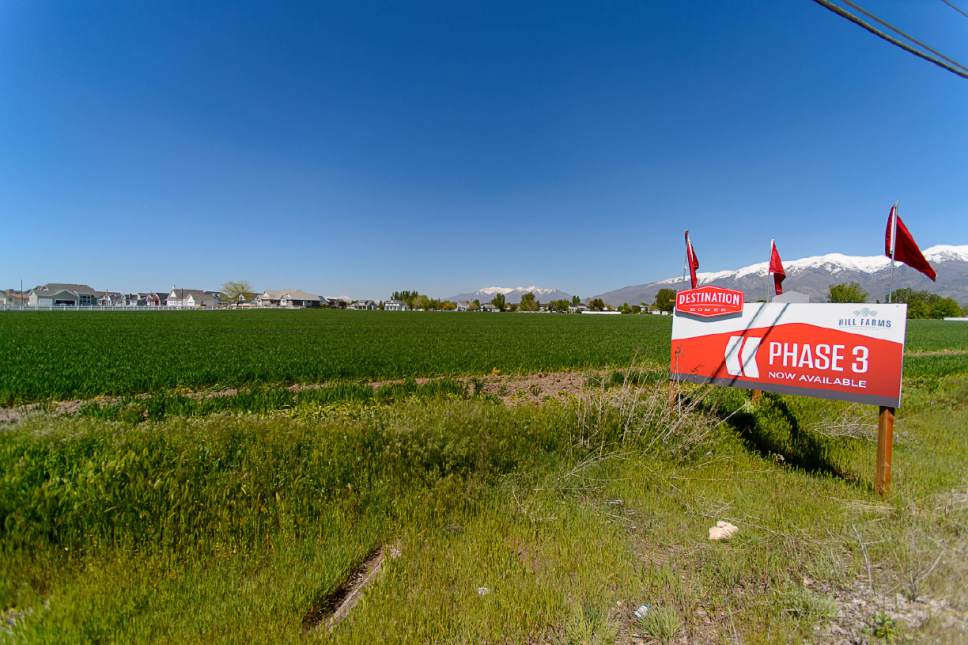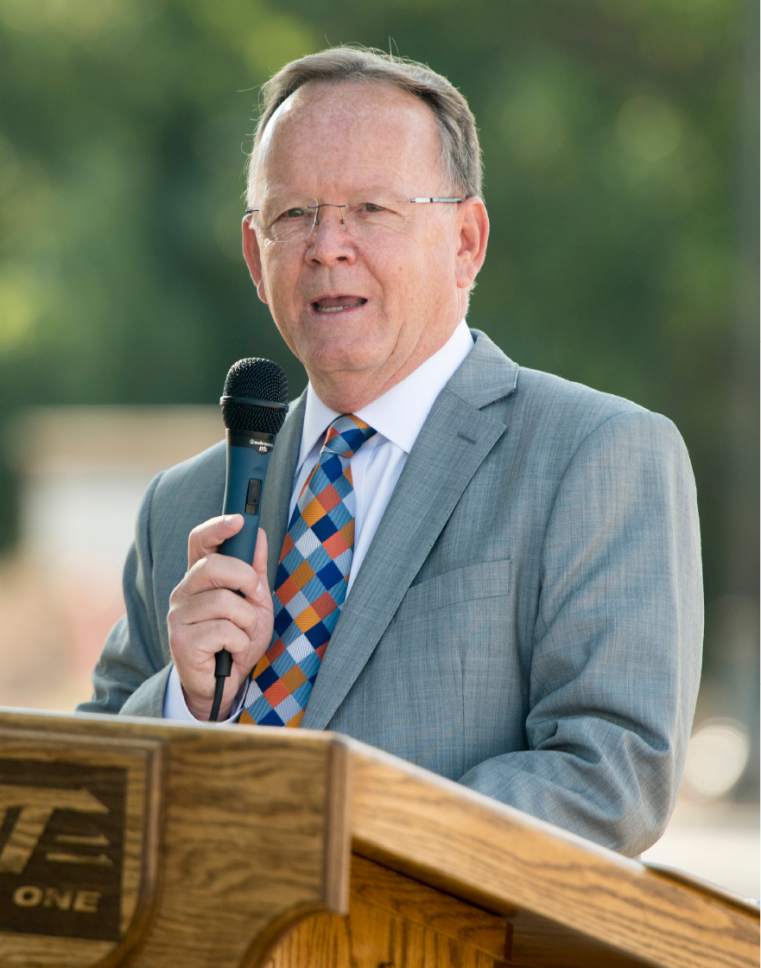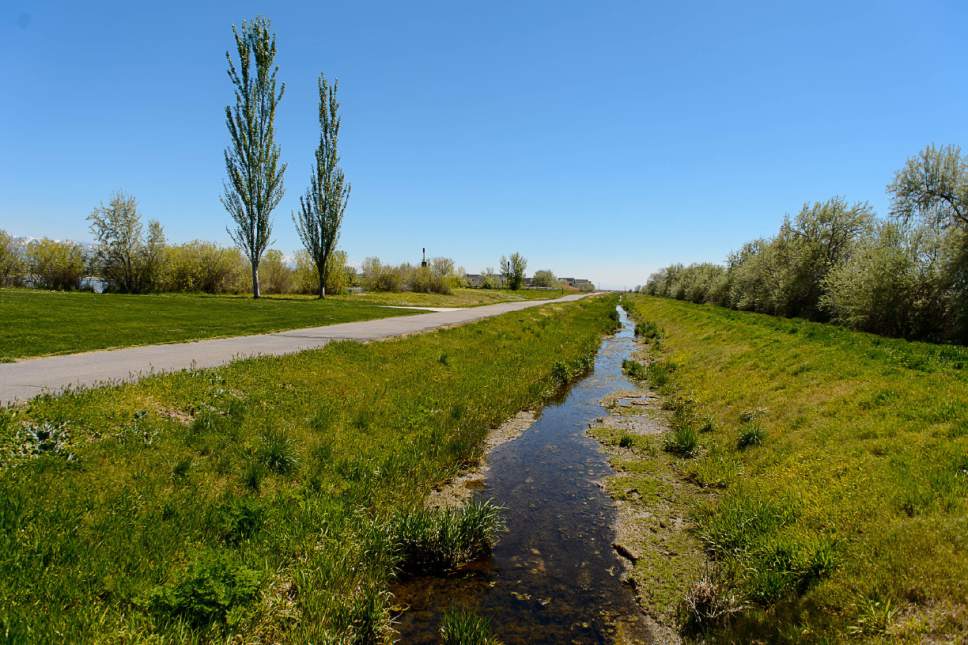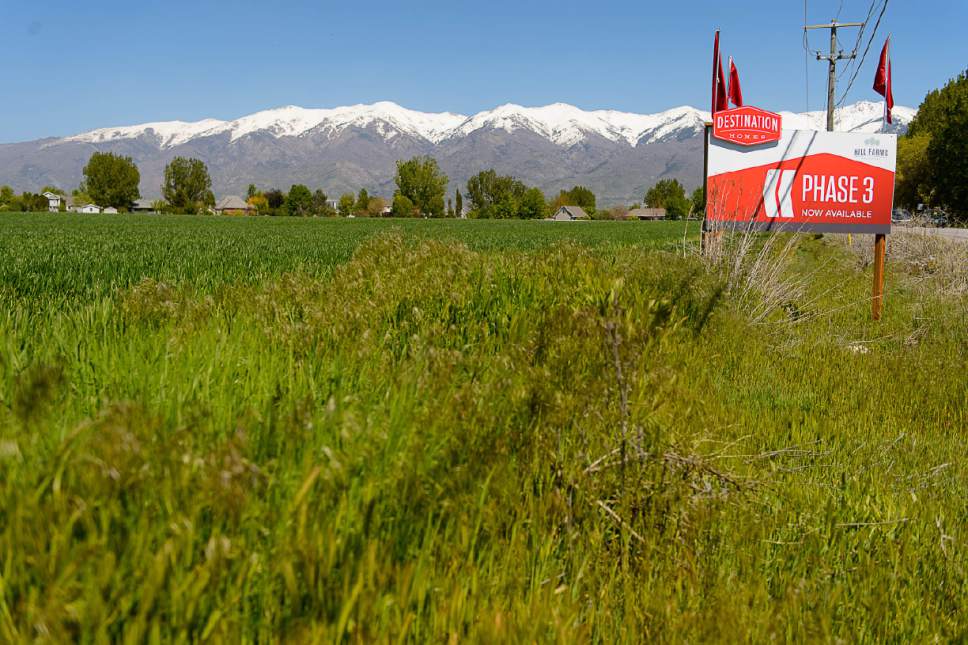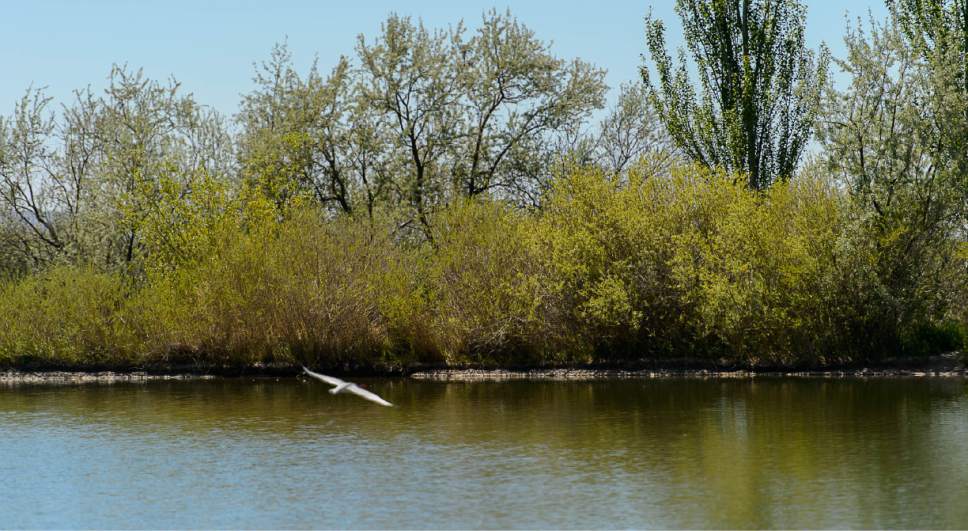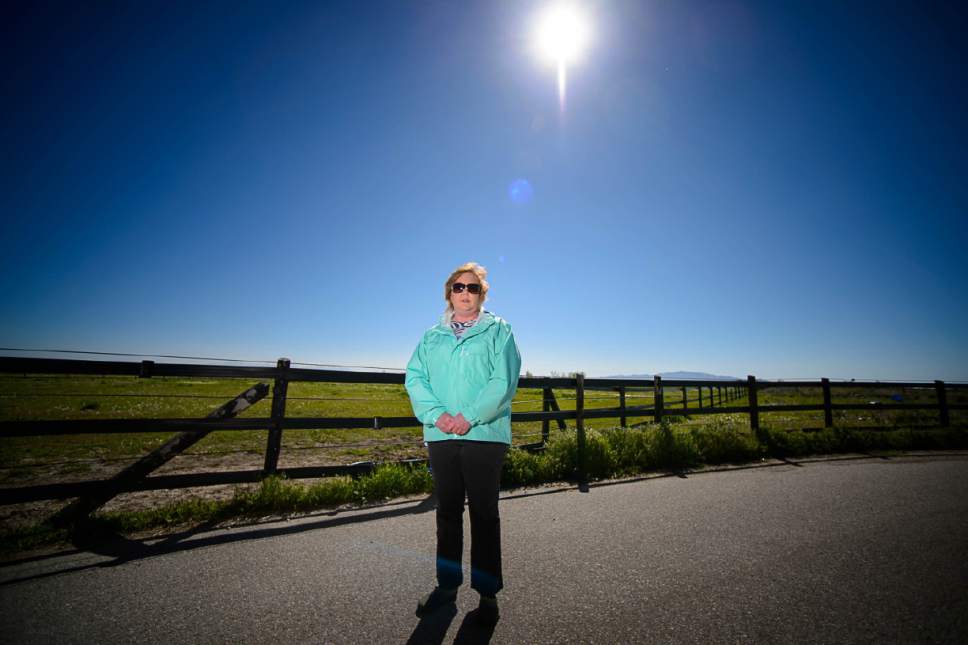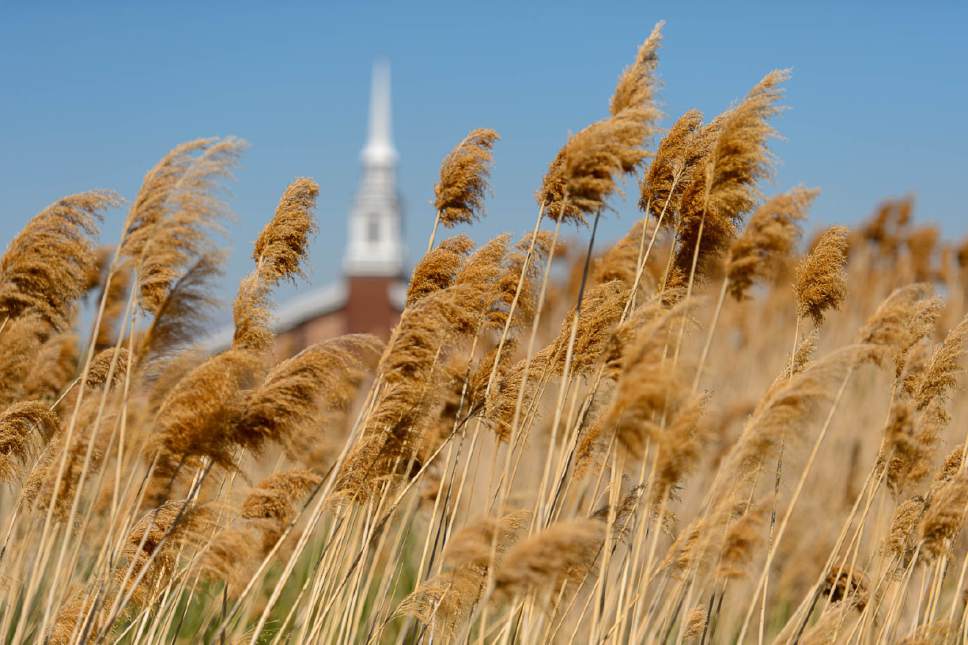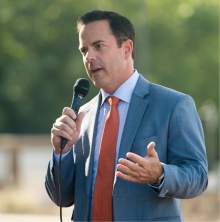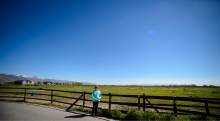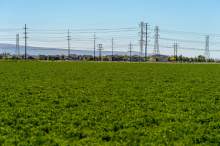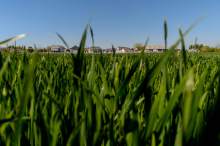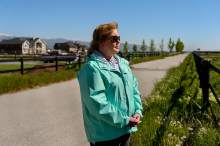This is an archived article that was published on sltrib.com in 2017, and information in the article may be outdated. It is provided only for personal research purposes and may not be reprinted.
The following story was researched and reported by The Utah Investigative Journalism Project in partnership with The Salt Lake Tribune.
The West Davis Corridor, a roughly 20-mile stretch of planned new freeway in northern Utah, has been around for more than a decade as a blueprint for planners, a priority for road builders and a protest cause for some residents. The $600 million-plus highway, now just a series of lines, is close to becoming a reality with a final environmental impact statement expected out before summer.
As proposed, the project will pave over wetlands, farmlands and raze possibly dozens of homes. The Utah Department of Transportation has carefully considered these challenges for years and concluded that accommodating Utah's explosive future growth and providing a boon to the local economy outweigh the negatives.
The positives also look convincing to two legislators in particular who have championed the highway while also standing to benefit privately from a major public investment.
House Majority Leader Brad Wilson, a Republican from Kaysville, is a developer who, through his company Destination Homes, has 46 undeveloped acres in west Kaysville less than a mile from the highway's proposed interchange at 200 North. Destination Homes has already built and sold a major subdivision in the area.
Senate Majority Whip Stuart Adams, a Republican from Layton, holds even more key landholdings in the area — more than 70 undeveloped acres in close proximity to the proposed freeway. His company, Terraventure Development, holds 17 undeveloped acres near an existing subdivision of his in west Layton, next to a proposed West Davis Corridor interchange at 2700 West in Layton. Even more valuable is a 31-acre parcel planned for commercial development a few miles north of the 2700 West interchange.
All of these properties should benefit greatly from the corridor, and some could see price bumps even now in anticipation of the road's construction.
—
Legacy of controversy • Transportation issues have long hit close to home for Adams, a member of committees overseeing Utah's transportation budget and policy and ex-chairman of the state Transportation Commission. He recalls growing up in Layton when Interstate 15 was first built near his childhood home, and he and his sixth-grade friends would sneak onto the paved construction site and hit baseballs. As a young man, he worked on the local planning commission to help bring traffic lights to Highway 89 and later led a commission to bring commuter rail and public transit to northern Utah.
As a developer, he's helped erect whole neighborhoods in the community through numerous subdivisions and commercial projects, but he says his business does not influence his public work.
"There is no conflict," Adams says. "I'm a fifth-generation Davis County resident. I love Davis and Weber counties. I love Utah — I'm just trying to increase the quality of life."
Wilson likewise denies any kind of a conflict between his business and public roles. Despite controversy over the proposed corridor, Wilson says everyone knew the road would go in, and has known so for years.
"Anyone that's in the development world pays attention to where future roads are going to go," Wilson says, adding that he and others in the community considered the road's placement a foregone conclusion. He says that his company had worked with Kaysville's master plan going back several years to ensure his projects (adjacent the proposed 200 North interchange) would be planned to accommodate the new freeway, with even a new traffic light planned nearby.
Still, Wilson says that he and other lawmakers have been careful not to try to muscle UDOT on the project.
That's not to say, though, that Wilson wasn't vocal at the local planning level. In 2015, he and Adams joined local leaders in calling for a unified push for funding the corridor at a time when opposition was mounting and Farmington had commissioned its own studies questioning the need for the highway. At the time, Wilson did not sound like someone who believed the road was inevitable.
"We can't let this opportunity or this window close," Wilson was quoted in a January 2015 Standard-Examiner article. "We've got to get everybody on board and get the funding."
Both express skepticism that the road project will benefit property values in the area. Wilson says his experience is that access to schools is more important to buyers than roads and Adams questions highway proximity as any kind of advantage to a development.
"Putting a freeway next to someone's home is supposed to benefit me?" Adams asks.
The answer is yes, according to experts.
—
Road to prosperity • Shawn Janke, a northern Utah real-estate broker of more than 25 years and chairman of the board of the state multiple listing service UtahRealEstate.com, is a supporter of the corridor project and believes it will improve values overall in the area. He even argues that homes directly abutting the project won't lose out.
"Overall, those properties are not going to go down in value," Janke says. "They just maybe will not increase in value as rapidly."
But other developments will be spurred and add to the local economy. He points to Farmington as an example. The city used to have fewer apartment complexes and lower priced homes until commuter rail and Legacy Highway gave a larger pool of renters and homebuyers more options to live in Davis County and commute to work in Salt Lake City.
"Before they could only live in certain areas," Janke says, "but now you're stretching out the population over longer distances."
Jeff Steagall, dean of the John B. Goddard School of Business and Economics at Weber State University, echoes that point and says even those abutting the road will see property values rebound as commercial development inevitably will spring up in the area to accommodate new neighborhoods.
"If you look at properties sold now and 10 years from now," Steagall says, "you'll see quite a noticeable increase in the value of those properties taken as a whole."
Such increases also don't necessarily wait until the orange cones are gone and construction is complete.
Wilson and Adams have argued that their current undeveloped residential parcels will be built and sold years before the corridor is completed in the next five to six years, and so they won't benefit from the road.
But in a 2015 article in the journal Transportation, researchers evaluated property values adjacent to highway projects in the Netherlands and found the property values increased by 5 percent, their highest appreciation, before the roads were completed in 2004. Their findings suggested that the housing market near the roads "anticipated the change in prices and began adjusting long before the roads were completed."
Perhaps most significant for Adams is the potential value of commercial development, that Weber State's Steagall pointed out would follow closely on the heels of increased residential construction near the corridor. Adams' largest chunk of vacant land in the area is a 31-acre lot on Hillfield Road, a few miles northeast of his subdivisions by 2700 West in Layton. Adams says he's been trying to get a commercial development there for some time and argues that the West Davis Corridor would actually hurt that project. He says the highway would mean residents on the west side of the county wouldn't drive past the commercial development to access I-15 anymore but would instead take the corridor and bypass it.
Regardless of where residents get on the freeway, new residents will need commercial services nearby, and in other states residential growth along transportation projects has invariably spurred commercial growth as far as 5 miles from new highways. In 2001, the Arizona Department of Transportation analyzed the long-term impacts of the Superstition Freeway, first built in 1969 with expansions occurring up to the late '90s. As in the Netherlands study, residential development boomed in anticipation of the project, with most of the new homes in the area developed three years before a major segment was completed in the 1980s.
"Between 1980 and 1985, with the completion of the Superstition Freeway to Power Road, the southeast region experienced the highest growth rate of any region in the metropolitan area," the study notes, adding that that growth was mostly nonresidential uses such as office parks, retail, a large mall, and an Arizona State University research park.
In a 2001 study out of the civil engineering department of the University of Texas at Austin, researchers crunched 18 years of data from 1982 to 1999 to see how a major road expansion project in Austin affected the value of commercial developments and concluded: "In general, roadway projects can have dramatic effects on property values." They found commercial developers with parcels on corner lots, with traffic signals that were close to new road projects, could hit the jackpot and expect the value of their land to jump by $50,000 per acre.
—
Public policy • Adams bristles at any suggestion he has a conflict of interest, especially in regard to the public roles he's played in transportation policy. As a legislator, he often has pushed for transportation project funding, including an unsuccessful attempt in 2011 to restore the sales tax on food to pay for transportation projects that was panned by low-income advocates for disproportionately hurting the poor. He also regularly helps shape UDOT's budget as a member of the Infrastructure and General Government Appropriations Subcommittee, the Executive Appropriations Committee and Senate leadership. Adams says simply that he is not "king" of the Legislature, and transportation bills, like all legislation, are vetted by the whole body.
Before his election to the state Senate, he served in 2007 as chairman of the Utah Transportation Commission. That year he helped set funding priorities for projects across the state, including a long-term plan that prioritized $600 million for the West Davis Corridor, known at that time as the "North Legacy Corridor." The plan then even included improvements to the 2700 West interchange adjacent his nearby holdings.
Adams points out, though, that the commission had members representing communities across the state that prioritized any number of major road and transit projects.
"To say that somebody who [pushes] for the widening of I-15, the West Davis Corridor, or public transit is doing it for self-interest, I think they just must not like the project," Adams says. "When you don't like a project and can't win on the issue, you attack the messenger."
—
Paved over • UDOT delayed finalizing its environmental impact statement for the proposed freeway in 2014 to take extra time to study various alternatives. Prominent among these was the so-called "shared solutions model" that proposed improving surface and arterial streets in the neighborhoods so as not to require the freeway at all.
Roger Borgenicht spearheaded the push for this plan, which, among other things, called for widening Bluff Road, running parallel to the proposed corridor area in Syracuse. On a drive down Bluff, Borgenicht points out all that would be saved by creating a boulevard instead of a new highway, including unique wetlands; keeping a highway out of the backyard of the Jensen Nature Park, a popular picnic spot and community fishing hole; and a pedestrian trail where morning joggers run past cow pastures while golden-tailed hawks fly overhead.
"Highways divide," Borgenicht says, "and boulevards connect."
When Christine Mikkelsen and her husband moved from Colorado to the Farmington Ranches neighborhood six years ago, they were told they would never lose their sweeping views of the Great Salt Lake and Antelope Island, thanks to the buffalo ranch.
Later, when they learned about the West Davis Corridor, Mikkelsen became heavily involved in the Save Farmington group that has opposed the project, helping with rallies and passing petitions that gathered hundreds of signatures.
Mikkelsen says the highway would totally change her home and neighborhood.
"Most people who bought out here bought for the view, for the quiet and for the country feel," Mikkelsen says.
She doesn't consider herself some fringe environmentalist, she just doesn't understand the benefits of paving over such a natural gem.
"It needs to be a park of some kind where everybody in the state could come and see a little bit of nature before it all gets paved," Mikkelsen says, before adding "and driving past it at 65 mph is not the same thing."
While there have been fierce protests against the freeway, most residents have supported it. The shared solutions model was nixed by UDOT a year ago largely because the proposal called for Weber and Davis communities to change land-use plans to promote more bicycling and public transit. But most of the communities did not accept those proposals, and several had already incorporated the corridor into their master plans.
Dave Millheim, city manager for Farmington, appreciated some of the shared solutions proposals and infused them into city plans, but acknowledges they were out of touch with the larger community.
"Their assumption was that everyone wanted to ride a bike and everybody would embrace that concept," Millheim says. "But in Utah we have a love affair with the car, and it ain't going away anytime soon."
— Eric S. Peterson is the founder and a director of The Utah Investigative Journalism Project. He reported and wrote this article for the project, in partnership with The Salt Lake Tribune.


